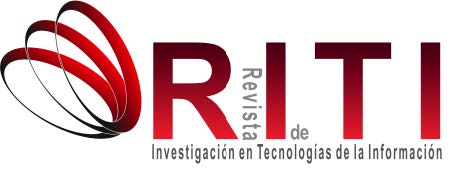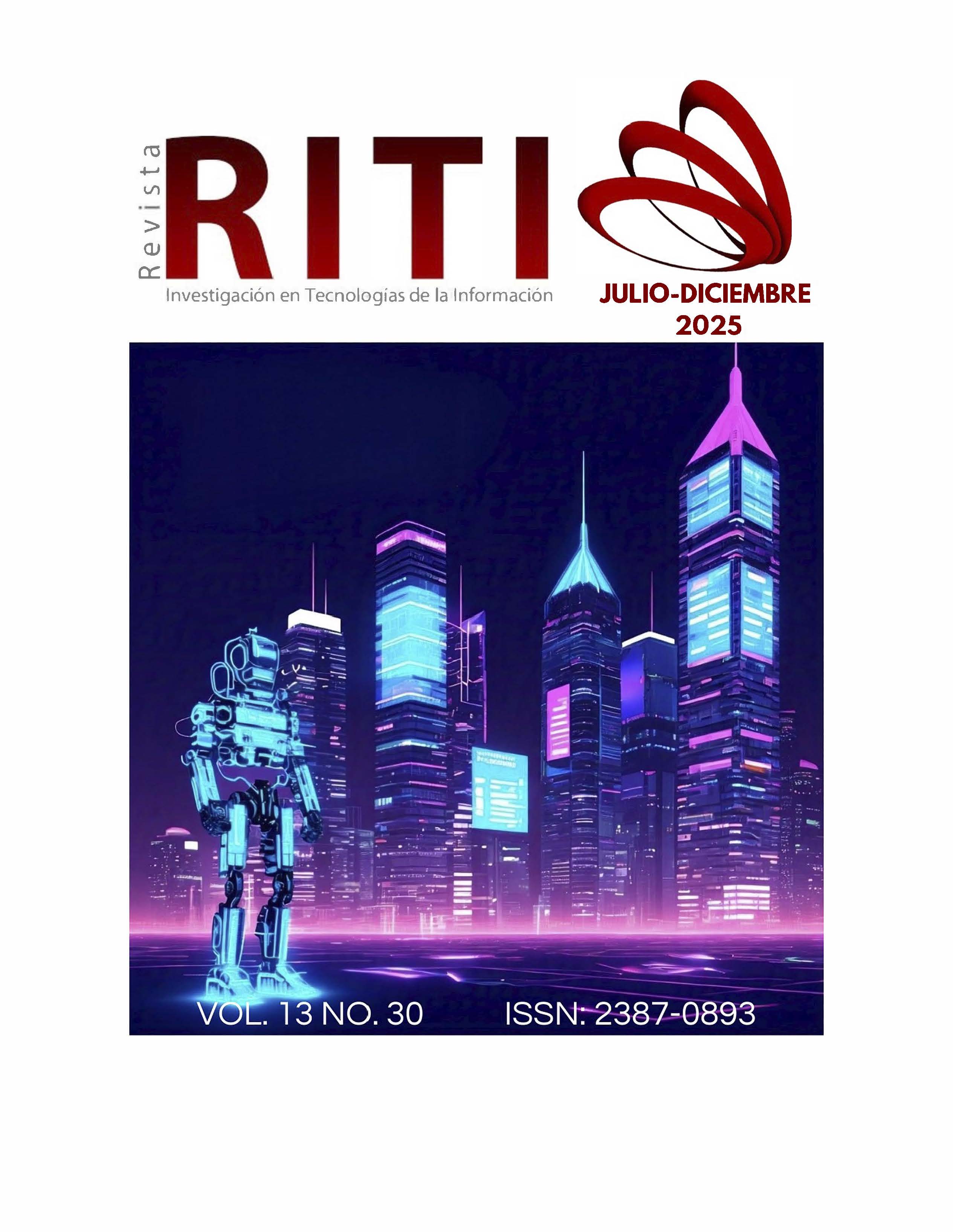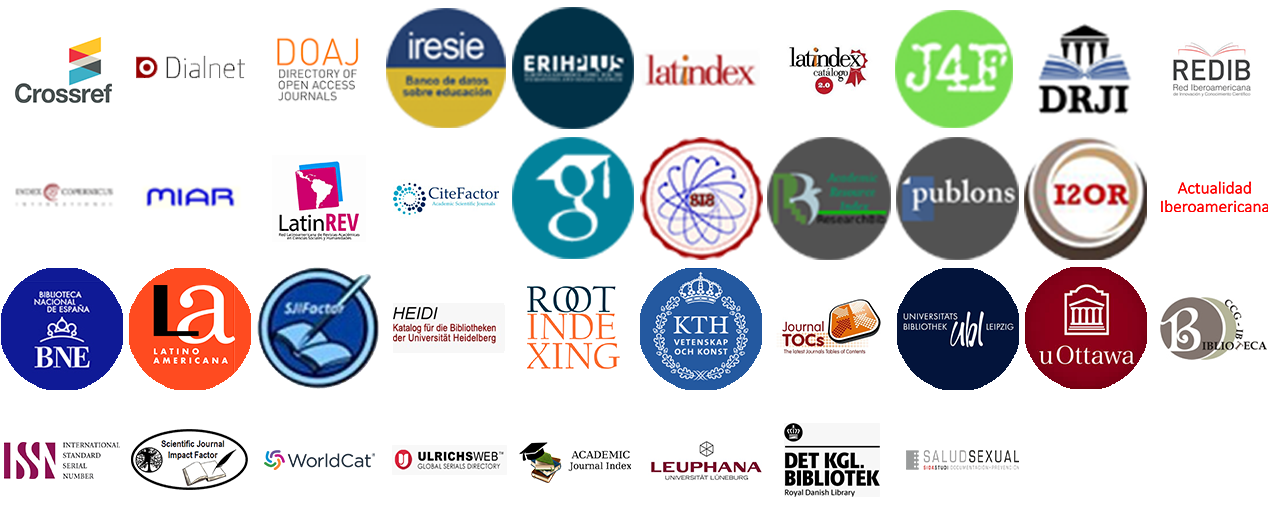El impacto de la inteligencia artificial y las herramientas digitales en las asignaturas básicas de la educación superior
DOI:
https://doi.org/10.36825/RITI.13.30.002Palabras clave:
Formación Docente, Competencias Digitales, Educación Superior, Tecnología EducativaResumen
La integración de inteligencia artificial (IA) y herramientas digitales en la educación superior ha transformado las metodologías pedagógicas, generando tanto oportunidades como desafíos en asignaturas fundamentales. Este estudio analiza el impacto diferenciado de estas tecnologías en Matemáticas, Lengua y Literatura, Ciencias Naturales, Ciencias Sociales y Lengua Extranjera, mediante un diseño mixto secuencial explicativo que combina una revisión sistemática de 312 estudios indexados con entrevistas semiestructuradas a 15 expertos. Los resultados revelan mejoras significativas en rendimiento, especialmente en CTIM y lenguas, aunque con efectos limitados en habilidades críticas y creativas. Se identifican paradojas clave, como la tensión entre personalización del aprendizaje y homogenización de resultados, así como brechas en formación docente y equidad de acceso. Las conclusiones destacan la necesidad de modelos híbridos que combinen IA con pedagogía tradicional, protocolos éticos para mitigar sesgos y estrategias diferenciadas por disciplina, proponiendo un marco para implementaciones responsables que equilibren innovación tecnológica con calidad educativa.
Citas
Luckin, R. (2018). Machine learning and human intelligence: The future of education for the 21st century. UCL Press. https://discovery.ucl.ac.uk/10178695/1/Machine%20Learning%20and%20Human%20Intelligence.pdf
Warschauer, M. (2012). Language and the Digital Divide. En C. A. Chapelle (Ed.) The Encyclopedia of Applied Linguistics. John Wiley & Sons. https://doi.org/10.1002/9781405198431.wbeal0602
Rutten, N., van Joolingen, W. R., van der Veen, J. T. (2012). The learning effects of computer simulations in science education. Computers & Education, 58 (1), 136-153. https://doi.org/10.1016/j.compedu.2011.07.017
Lazer, D. M. J., Pentland, A., Watts, D. J., Aral, S., Athey, S., Contractor, N., Freelon, D., Gonzalez-Bailon, S., King, G., Margetts, H., Nelson, A., Salganik, M. J., Strohmaier, M., Vespignani, A., Wagner, C (2020). Computational social science: Obstacles and opportunities. Science, 369 (6507), 1060-1062. https://doi.org/10.1126/science.aaz8170
Godwin-Jones, R. (2022). Language tools and technologies. Language Learning & Technology, 26 (2), 1-19. https://www.lltjournal.org/item/10125-73474/
UNESCO. (2021). AI and education: Guidance for policy-makers. https://unesdoc.unesco.org/ark:/48223/pf0000376709
Selwyn, N. (2019). Should robots replace teachers? AI and the future of education. Polity Press.
VanLehn, K. (2011). The relative effectiveness of human tutoring, intelligent tutoring systems, and other tutoring systems. Educational Psychologist, 46 (4), 197-221. https://doi.org/10.1080/00461520.2011.611369
Ruiz Muñoz, G. F. (2024). Integración de la tecnología y la pedagogía en los sistemas de tutoría inteligente. Edutec, Revista Electrónica de Tecnología Educativa, (89), 144–155. https://doi.org/10.21556/edutec.2024.89.3199
Hyland, K., Hyland, F. (2019). Contexts and Issues in Feedback on L2 Writing. En K. Hyland, F. Hyland (Eds.), Feedback in Second Language Writing: Contexts and Issues (pp. 1–22). Cambridge University Press.
Cotton, D. R. E., Cotton, P. A., Shipway, J. R. (2023). Chatting and cheating: Ensuring academic integrity in the era of ChatGPT. Innovations in Education and Teaching International, 61 (2), 228–239. https://doi.org/10.1080/14703297.2023.2190148
Herga, N. R., Čagran, B., Dinevski, D. (2016). Virtual laboratory in chemistry. Eurasia Journal of Mathematics, Science & Technology Education, 12 (3), 593-608. https://doi.org/10.12973/eurasia.2016.1224a
Gibbs, G. R. (2018). Analyzing qualitative data (2nd ed.). SAGE. https://doi.org/10.4135/9781526441867
Chassignol, M., Khoroshavin, A., Klimova, A., Bilyatdinova, A. (2018). Artificial intelligence trends in education. Procedia Computer Science, 136, 16-24. https://doi.org/10.1016/j.procs.2018.08.233
Käser, T., Klingler, S., Schwing, A. G., Gross, M. (2017). Dynamic Bayesian networks for student modeling. IEEE Transactions on Learning Technologies, 10 (4), 450-462. https://doi.org/10.1109/TLT.2017.2689017
Akçayır, M., Akçayır, G. (2017). Advantages and challenges associated with augmented reality for education: A systematic review of the literature. Educational Research Review, 20, 1–11. https://doi.org/10.1016/j.edurev.2016.11.002
boyd, d., Crawford, K. (2012). Critical questions for big data. Information, Communication & Society, 15 (5), 662-679. https://doi.org/10.1080/1369118X.2012.678878
Ke, F. (2019). Mathematical problem solving and game design. Educational Technology Research and Development, 67 (5), 1085-1104. https://doi.org/10.1007/s11423-018-09643-2
Swales, J. M., Feak, C. B. (2012). Academic writing for graduate students (3rd ed.). University of Michigan Press. https://doi.org/10.3998/mpub.2173936
Perkins, M. (2023). Academic Integrity considerations of AI Large Language Models in the post-pandemic era: ChatGPT and beyond. Journal of University Teaching and Learning Practice, 20 (2). https://doi.org/10.53761/1.20.02.07
Bamman, D., Underwood, T., Smith, N. A. (2014). A Bayesian mixed effects model of literary character. 52nd Annual Meeting of the Association for Computational Linguistics (Volume 1: Long Papers) (pp. 370–379). Association for Computational Linguistics. https://aclanthology.org/P14-1035
Lee, K. (2012). Augmented Reality in Education and Training. Tech Trends, 56, 13–21. https://doi.org/10.1007/s11528-012-0559-3
Moore, E. B., Chamberlain, J. M., Parson, R., Perkins, K. K. (2014). PhET interactive simulations. Journal of Chemical Education, 91 (8), 1191-1197. https://doi.org/10.1021/ed4005084
Olympiou, G., Zacharia, Z. C. (2012). Blending physical and virtual manipulatives: An effort to improve students’ conceptual understanding through science laboratory experimentation. Science Education, 96 (1), 21–47. https://doi.org/10.1002/sce.20463
Makransky G, Borre-Gude S, Mayer R. E. (2019). Motivational and cognitive benefits of training in immersive virtual reality based on multiple assessments. Journal of Computer Assisted Learning, 35, 691–707. https://doi.org/10.1111/jcal.12375
Owan, V. J., Abang, K. B., Idika, D. O., Etta, E. O., Bassey, B. A. (2023). Exploring the potential of artificial intelligence tools in educational measurement and assessment. Eurasia Journal of Mathematics, Science and Technology Education, 19 (8), 1-15. https://doi.org/10.29333/ejmste/13428
Hooda, M., Rana, C., Dahiya, O., Rizwan, A., Hossain, M. S. (2022). Artificial Intelligence for Assessment and Feedback to Enhance Student Success in Higher Education. Mathematical Problems in Engineering, 2022, 1-19. https://doi.org/10.1155/2022/5215722
OECD. (2023). OECD Digital Education Outlook 2023: Towards an Effective Digital Education Ecosystem, OECD Publishing. https://doi.org/10.1787/c74f03de-en
National Science Teaching Association. (2025). Connected Science Learning. NSTA Press. https://www.nsta.org/connected-science-learning
Ding, A.W., Li, S. (2025). Generative AI lacks the human creativity to achieve scientific discovery from scratch. Scientific Reports, 15, 1-2. https://doi.org/10.1038/s41598-025-93794-9
UNESCO. (2024). Revitalizing STEM education to equip next generations with STEM competency. https://www.unesco.org/en/articles/revitalizing-stem-education-equip-next-generations-stem-competency
Tufekci, Z. (2017). Twitter and tear gas: The power and fragility of networked protest. Yale University Press. https://doi.org/10.25969/mediarep/14848
Johnson, R. B., Onwuegbuzie, A. J., Turner, L. A. (2007). Toward a Definition of Mixed Methods Research. Journal of Mixed Methods Research, 1 (2), 112–133. https://doi.org/10.1177/1558689806298224
Winthereik, B. R. (2017). Noortje Marres (forthcoming, March 2017) Digital Sociology: The reinvention of social research. Cambridge: Polity Press. Science & Technology Studies, 30 (1), 54–55. https://doi.org/10.23987/sts.60428
Mullainathan, S., Spiess, J. (2017). Machine learning: An applied econometric approach. Journal of Economic Perspectives, 31 (2), 87-106. https://doi.org/10.1257/jep.31.2.87
O'Neil, C. (2016). Weapons of Math Destruction: How Big Data Increases Inequality and Threatens Democracy. Crown Publishing. https://dl.acm.org/doi/10.5555/3002861
Snee, H., Hine, C., Morey, Y., Roberts, S., Watson, H. (2016). Digital Methods for Social Science: An Interdisciplinary Guide to Research Innovation. Palgrave Macmillan. https://doi.org/10.1057/9781137453662
UNESCO. (2021). UNESCO science report: The race against time for smarter development. UNESCO. https://doi.org/10.18356/9789210058575
Townsend, L., Wallace, C. (2017). The ethics of using social media data in research: A new framework. En K. Woodfield (Ed.), The ethics of online research (pp. 189–207). Emerald Publishing Limited. https://doi.org/10.1108/S2398-601820180000002008
Conte, R., Gilbert, N., Bonelli, G., Cioffi-Revilla, C., Deffuant, G., Kertesz, J., Loreto, V., Moat, S., Nadal, J.-P., Sanchez, A., Nowak, A., Flache, A., San Miguel, M., Helbing, D. (2012). Manifesto for computational social science. The European Physical Journal Special Topic, 214 (1), 325-346. https://doi.org/10.1140/epjst/e2012-01697-8
Castells, M. (2005). La era de la información: economía, sociedad y cultura. Vol. I. La sociedad red. Alianza Editorial. https://www.alianzaeditorial.es/libro/libros-singulares-ls/la-era-de-la-informacion-economia-sociedad-y-cultura-manuel-castells-9788420677002/
Duolingo. (2023). Duolingo Language Report 2023. https://blog.duolingo.com/2023-duolingo-language-report/
Godwin-Jones, R. (2021). Big data and language learning: Opportunities and challenges. Language Learning & Technology, 25 (1), 4–19. https://doi.org/10.64152/10125/44747
Sun, W. (2023). The impact of automatic speech recognition technology on second language pronunciation and speaking skills of EFL learners: A mixed methods investigation. Frontiers in Psychology, 14, 1-14. https://doi.org/10.3389/fpsyg.2023.1210187
Holstein, K., Wortman Vaughan, J., Daumé, H. III, Dudík, M., Wallach, H. (2019). Improving fairness in machine learning systems: What do industry practitioners need? CHI Conference on Human Factors in Computing Systems, Glasgow Scotland, Uk. https://doi.org/10.1145/3290605.3300830
Chen, B., Wang, Y., Wang, L. (2022). The Effects of Virtual Reality-Assisted Language Learning: A Meta-Analysis. Sustainability, 14 (6), 1-18. https://doi.org/10.3390/su14063147
Pearson. (2021). Versant English Test: Official guide for test-takers (v1.0). Pearson. https://www.pearson.com/content/dam/one-dot-com/one-dot-com/pearson-languages/en-gb/pdfs/versant-resources/official-test-guide-versant-english-test.pdf
Link, S., Koltovskaia, S. (2023). Automated Scoring of Writing. En O. Kruse, C. Rapp, C. A. Anson, K. Benetos, E. Cotos, A. Devitt, A. Shibani (Eds.), Digital Writing Technologies in Higher Education (pp. 333-345). Springer, Cham. https://doi.org/10.1007/978-3-031-36033-6_21
UNESCO. (2021). World Atlas of Languages. https://unesdoc.unesco.org/ark:/48223/pf0000380132
TESOL International Association. (2023). TESOL Research Directions 2023-2027: Final report. https://www.tesol.org/media/ob2g5gdz/final2023_recommendations_how-we-got-here_1-dec_formatted.pdf
European Commission. (2019). Ethics guidelines for trustworthy AI. https://digital-strategy.ec.europa.eu/en/library/ethics-guidelines-trustworthy-ai
Paniagua, A., Istance, D. (2018). Teachers as designers of learning environments: The importance of innovative pedagogies. OECD Publishing. https://doi.org/10.1787/9789264085374-en
Pegrum, M., Hockly, N., Dudeney, G. (2022). Digital literacies (2.ª ed.). Routledge. https://doi.org/10.4324/9781003262541
Yarrow, N., Shen, S., Alyono, K. (2023). Using education technology to improve K–12 student learning: Evidence from low- and middle-income countries. World Bank Group. https://openknowledge.worldbank.org/handle/10986/40508
Descargas
Publicado
Cómo citar
Número
Sección
Licencia
Derechos de autor 2025 Revista de Investigación en Tecnologías de la Información

Esta obra está bajo una licencia internacional Creative Commons Atribución-NoComercial 4.0.
Esta revista proporciona un acceso abierto a su contenido, basado en el principio de que ofrecer al público un acceso libre a las investigaciones ayuda a un mayor intercambio global del conocimiento.
El texto publicado en la Revista de Investigación en Tecnologías de la Información (RITI) se distribuye bajo la licencia Creative Commons (CC BY-NC
 ), que permite a terceros utilizar lo publicado citando a los autores del trabajo y a RITI, pero sin hacer uso del material con propósitos comerciales.
), que permite a terceros utilizar lo publicado citando a los autores del trabajo y a RITI, pero sin hacer uso del material con propósitos comerciales.



